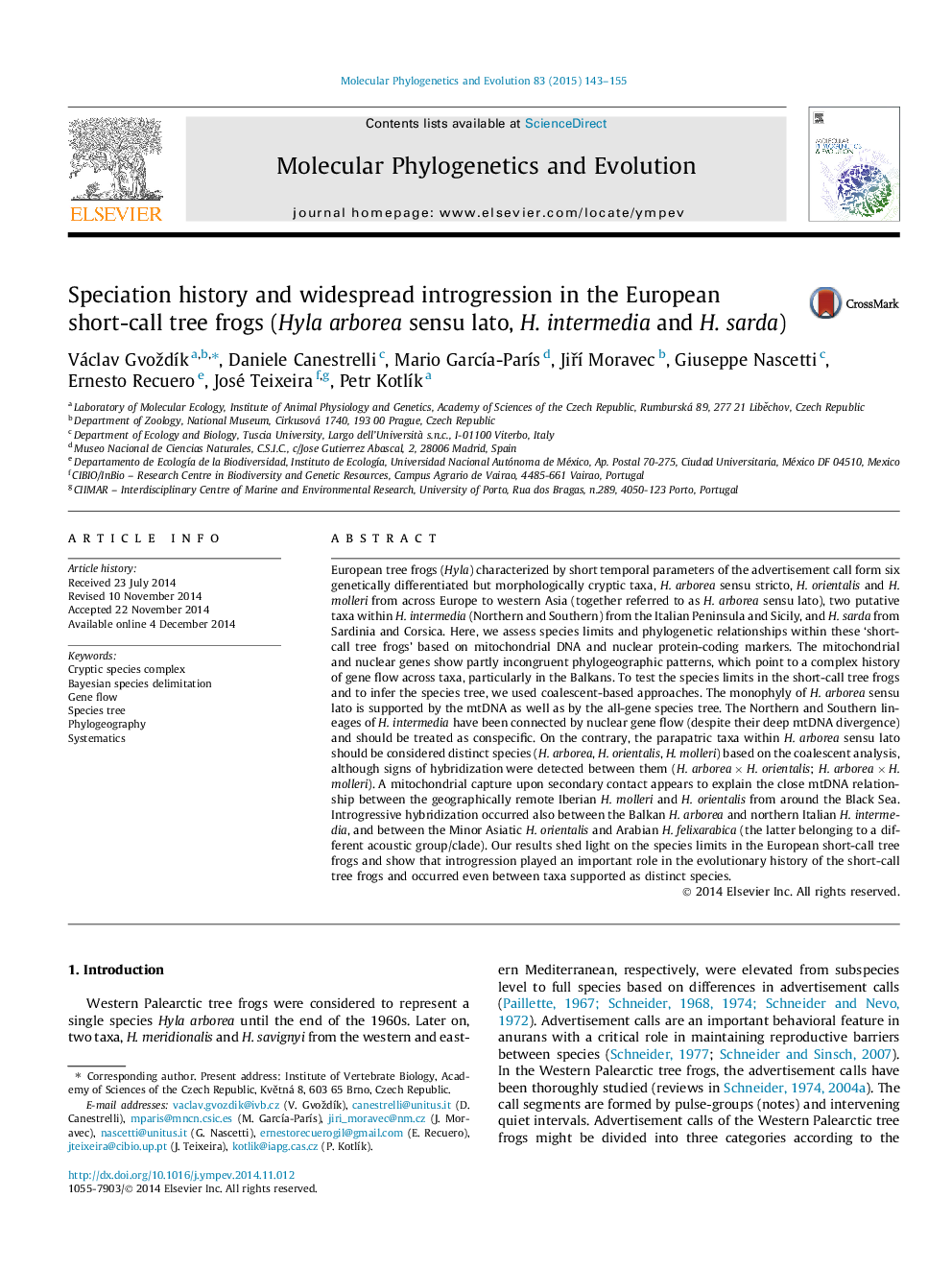| کد مقاله | کد نشریه | سال انتشار | مقاله انگلیسی | نسخه تمام متن |
|---|---|---|---|---|
| 5919074 | 1570813 | 2015 | 13 صفحه PDF | دانلود رایگان |

- Hyla arborea s.l. (H. arborea, H. orientalis, H. molleri) monophyly is supported.
- Introgression and recombination form the genetic structure across contact zones.
- Bayesian species delimitation supports taxa of H. arborea s.l. as distinct species.
- Northern and Southern H. intermedia lineages should be treated as conspecific.
- mtDNA strongly affects the species-tree analysis if limited nuclear data are used.
European tree frogs (Hyla) characterized by short temporal parameters of the advertisement call form six genetically differentiated but morphologically cryptic taxa, H. arborea sensu stricto, H. orientalis and H. molleri from across Europe to western Asia (together referred to as H. arborea sensu lato), two putative taxa within H. intermedia (Northern and Southern) from the Italian Peninsula and Sicily, and H. sarda from Sardinia and Corsica. Here, we assess species limits and phylogenetic relationships within these 'short-call tree frogs' based on mitochondrial DNA and nuclear protein-coding markers. The mitochondrial and nuclear genes show partly incongruent phylogeographic patterns, which point to a complex history of gene flow across taxa, particularly in the Balkans. To test the species limits in the short-call tree frogs and to infer the species tree, we used coalescent-based approaches. The monophyly of H. arborea sensu lato is supported by the mtDNA as well as by the all-gene species tree. The Northern and Southern lineages of H. intermedia have been connected by nuclear gene flow (despite their deep mtDNA divergence) and should be treated as conspecific. On the contrary, the parapatric taxa within H. arborea sensu lato should be considered distinct species (H. arborea, H. orientalis, H. molleri) based on the coalescent analysis, although signs of hybridization were detected between them (H. arborea Ã H. orientalis; H. arborea Ã H. molleri). A mitochondrial capture upon secondary contact appears to explain the close mtDNA relationship between the geographically remote Iberian H. molleri and H. orientalis from around the Black Sea. Introgressive hybridization occurred also between the Balkan H. arborea and northern Italian H. intermedia, and between the Minor Asiatic H. orientalis and Arabian H. felixarabica (the latter belonging to a different acoustic group/clade). Our results shed light on the species limits in the European short-call tree frogs and show that introgression played an important role in the evolutionary history of the short-call tree frogs and occurred even between taxa supported as distinct species.
Journal: Molecular Phylogenetics and Evolution - Volume 83, February 2015, Pages 143-155